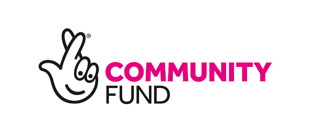Invisible Threads
This strength of connection, or sense of community, is what underpins all that STAR Project does. It’s a solid and safe foundation, albeit invisible, a platform for change that facilitates risk taking, creative expression, exploration and growth. The onset of Covid-19 threatened to rip through these invisible threads as, piece by piece, they were imbued with fear. Connections were now fraught with risk.
We feared the impact, what it might mean for us, our community, ourselves, our existence. We worried about funding, staff health and safety, loss of income, and we worried about our ability to get through this unscathed. Fear is contagious and, alongside our own fears, we were inundated by the fears of hundreds of distressed and vulnerable community members looking for comfort and reassurance. People were displaying signs of trauma and grief, fight or flight responses were kicking in and, for many, there was a profound sense of loss. A loss of what was known and safe, of connections, and of the way things were supposed to be.
Understanding this threat to the psychological safety of our community is what compelled us to try and salvage those invisible threads as quickly as was humanly possible. A collective determination developed within the team and we decided to do what we do best; we got creative in the face of adversity and upped our game.
And so began our digital revolution.
We experienced a real urgency to adapt and creatively replicate our services digitally, and as closely as possible, to what was familiar. Within 32 hours we had our contingency plan in place, adapted our social media strategy, a creative operational plan and associated protocols, set up various digital tools and implemented a new wellbeing framework for the team. The only exception to this was our Community Fridge which we adapted to deliver, an essential service tackling food insecurity and reducing food waste, but that’s a whole other blog in itself.
For our community members, their need to connect with us, and each other, was so strong they were willing to put aside age-old resistances to change and, for some, a mistrust of new technology.
If you’d said to me a month ago that our Drop-In would work digitally, I’d have laughed (albeit in my head). If you’d said that we could be just as creative and that our community would engage just as creatively, I may have doubted it. Yet here we are, even busier than before and with a whole new level of creativity to explore. People who were a bit quieter have come into their own, leading on topics, enjoying a newfound digital freedom. People who resisted technology are suddenly connoisseurs of Zoom, Slack and Hangouts.
Amid the horrors of this crisis, the fear and the loss, there has also been gain. New ways of working, evidence of cultural resilience*, expanding comfort zones, heightened creativity, lots of compassion, and a new kind of connectedness. Those invisible threads continue to hold fast.
Sharon (bruised but battling on)
*Cornelius Holtorf (Assistant Professor, University of Lund, Sweden) describes cultural resilience as the capability of a cultural system (consisting of cultural processes in relevant communities) to absorb adversity, deal with change and continue to develop.
Updated: April 23, 2020

